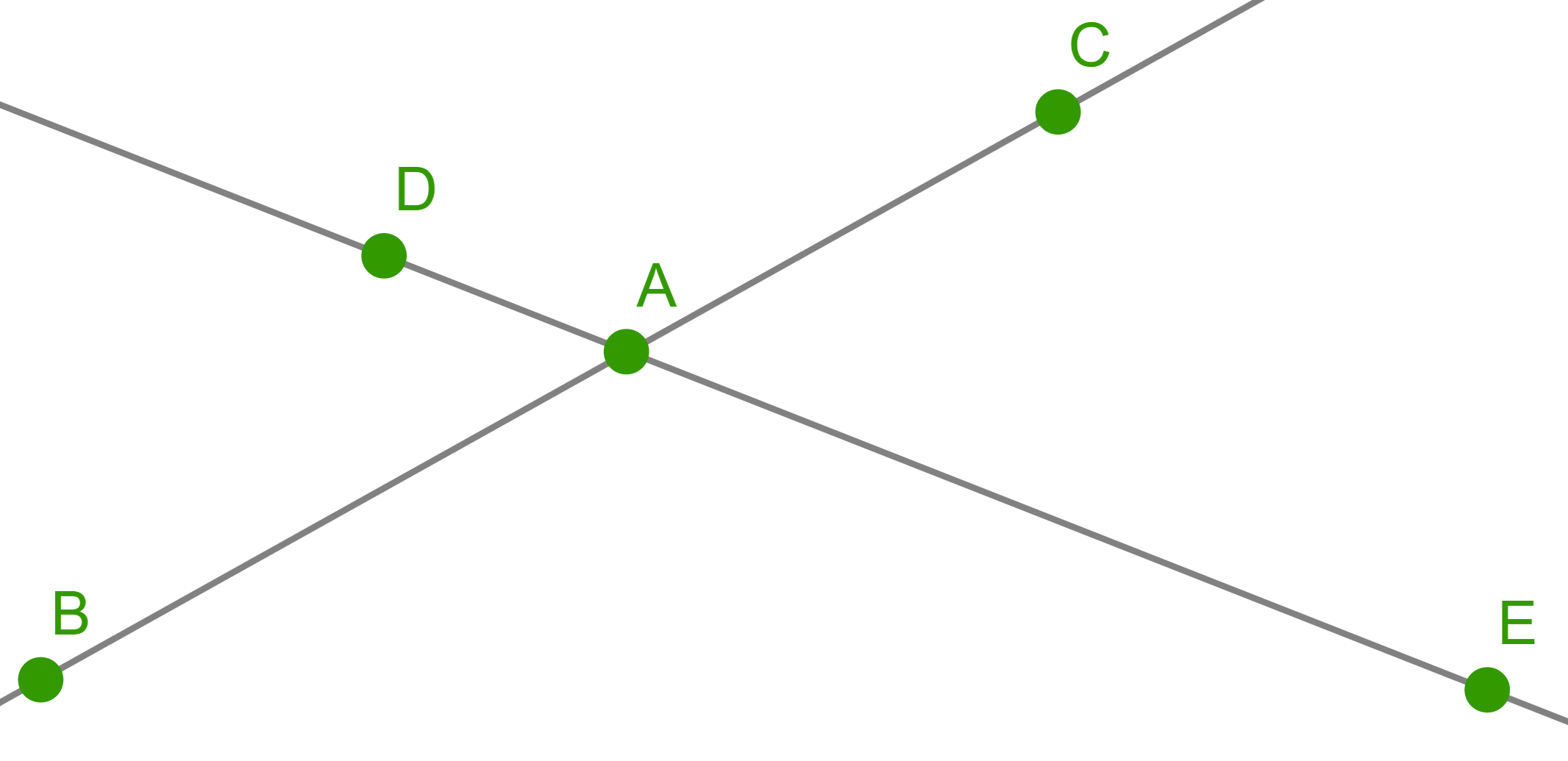Problems
What is the largest amount of numbers that can be selected from the set 1, 2, ..., 1963 so that the sum of any two numbers is not divisible by their difference?
Five oaks are planted along two linear park alleys in such a way that
there are three oaks along each alley, see picture. Where should we
plant the sixth oak so that it will be possible to lay two more linear
alleys, along each of which there would also be three oak trees
growing?

The smell of a flowering lavender plant diffuses through a radius of 20 m around it. How many lavender plants must be planted along a straight 400m path so that the smell of the lavender reaches every point on the path.
Given an endless piece of chequered paper with a cell side equal to one. The distance between two cells is the length of the shortest path parallel to cell lines from one cell to the other (it is considered the path of the center of a rook). What is the smallest number of colors to paint the board (each cell is painted with one color), so that two cells, located at a distance of 6, are always painted with different colors?
a) We are given two cogs, each with 14 teeth. They are placed on top of one another, so that their teeth are in line with one another and their projection looks like a single cog. After this 4 teeth are removed from each cog, the same 4 teeth on each one. Is it always then possible to rotate one of the cogs with respect to the other so that the projection of the two partially toothless cogs appears as a single complete cog? The cogs can be rotated in the same plane, but cannot be flipped over.
b) The same question, but this time two cogs of 13 teeth each from which 4 are again removed?
A group of psychologists developed a test, after which each person gets a mark, the number \(Q\), which is the index of his or her mental abilities (the greater \(Q\), the greater the ability). For the country’s rating, the arithmetic mean of the \(Q\) values of all of the inhabitants of this country is taken.
a) A group of citizens of country \(A\) emigrated to country \(B\). Show that both countries could grow in rating.
b) After that, a group of citizens from country \(B\) (including former ex-migrants from \(A\)) emigrated to country \(A\). Is it possible that the ratings of both countries have grown again?
c) A group of citizens from country \(A\) emigrated to country \(B\), and group of citizens from country \(B\) emigrated to country \(C\). As a result, each country’s ratings was higher than the original ones. After that, the direction of migration flows changed to the opposite direction – part of the residents of \(C\) moved to \(B\), and part of the residents of \(B\) migrated to \(A\). It turned out that as a result, the ratings of all three countries increased again (compared to those that were after the first move, but before the second). (This is, in any case, what the news agencies of these countries say). Can this be so (if so, how, if not, why)?
(It is assumed that during the considered time, the number of citizens \(Q\) did not change, no one died and no one was born).
Elephants, rhinoceroses, giraffes. In all zoos where there are elephants and rhinoceroses, there are no giraffes. In all zoos where there are rhinoceroses and there are no giraffes, there are elephants. Finally, in all zoos where there are elephants and giraffes, there are also rhinoceroses. Could there be a zoo in which there are elephants, but there are no giraffes and no rhinoceroses?
Among 4 people there are no three with the same name, the same middle name and the same surname, but any two people have either the same first name, middle name or surname. Can this be so?
What is the maximum number of kings, that cannot capture each other, which can be placed on a chessboard of size \(8 \times 8\) cells?
On a table, there are five coins lying in a row: the middle one lies with a head facing upwards, and the rest lie with the tails side up. It is allowed to simultaneously flip three adjacent coins. Is it possible to make all five coins positioned with the heads side facing upwards with the help of several such overturns?